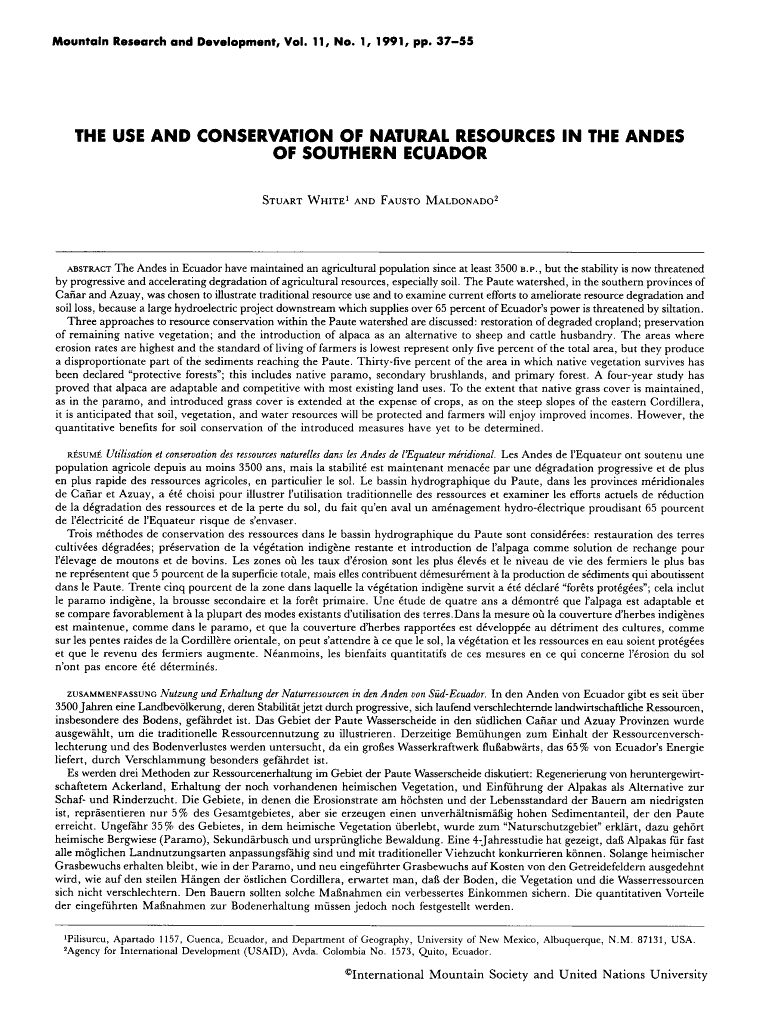
The Andes in Ecuador have maintained an agricultural population since at least 3500 B.P., but the stability is now threatened by progressive and accelerating degradation of agricultural resources, especially soil. The Paute watershed, in the southern provinces of Cañar and Azuay, was chosen to illustrate traditional resource use and to examine current efforts to ameliorate resource degradation and soil loss, because a large hydroelectric project downstream which supplies over 65 percent of Ecuador's power is threatened by siltation. Three approaches to resource conservation within the Paute watershed are discussed: restoration of degraded cropland; preservation of remaining native vegetation; and the introduction of alpaca as an alternative to sheep and cattle husbandry. The areas where erosion rates are highest and the standard of living of farmers is lowest represent only five percent of the total area, but they produce a disproportionate part of the sediments reaching the Paute. Thirty-five percent of the area in which native vegetation survives has been declared "protective forests"; this includes native paramo, secondary brushlands, and primary forest. A four-year study has proved that alpaca are adaptable and competitive with most existing land uses. To the extent that native grass cover is maintained, as in the paramo, and introduced grass cover is extended at the expense of crops, as on the steep slopes of the eastern Cordillera, it is anticipated that soil, vegetation, and water resources will be protected and farmers will enjoy improved incomes. However, the quantitative benefits for soil conservation of the introduced measures have yet to be determined.